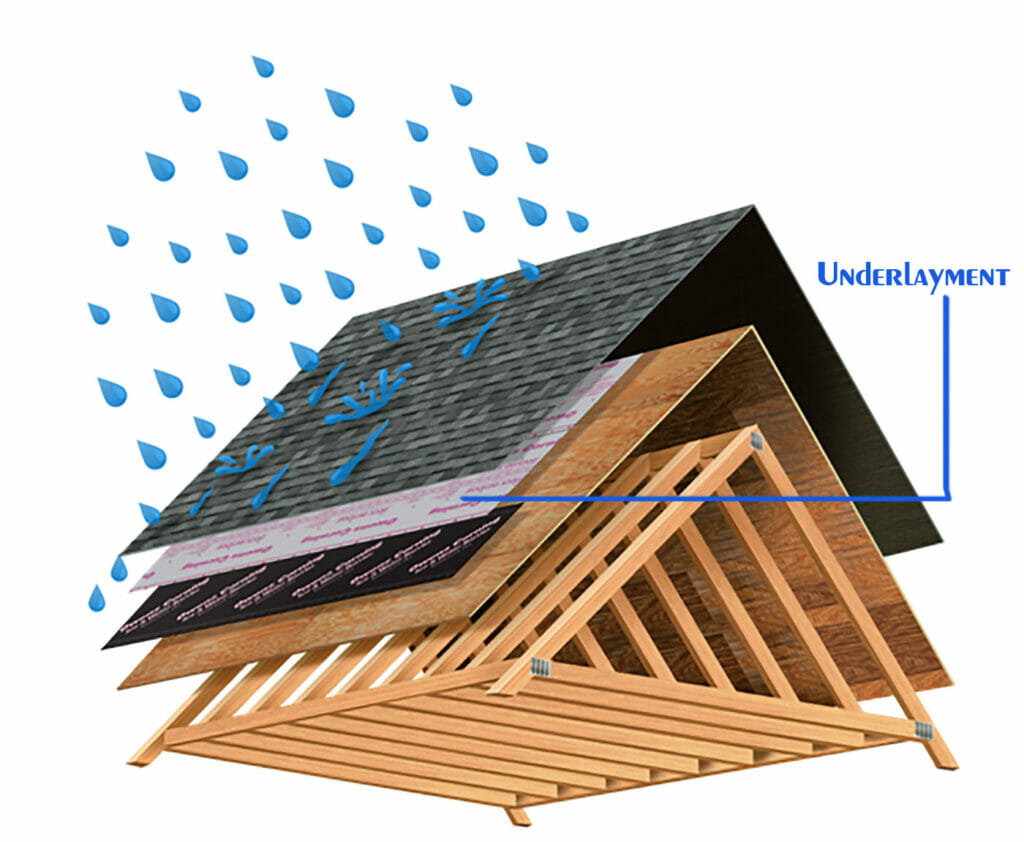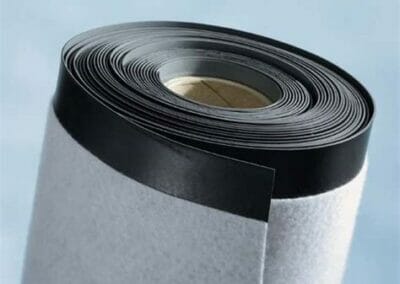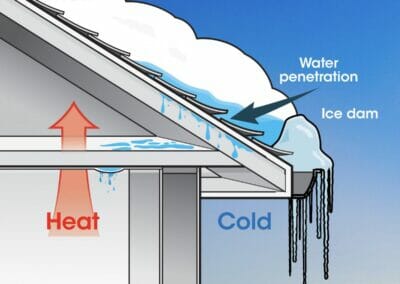Did you know that we can install new roofs in the rain? Here’s how we do it:
1. Underlayment

- There are many components that go into a new roof and the quality of those products contribute to the overall performance that you will get out of your roof.
- In the Pacific Northwest, waterproofing is essential to any project when it comes to residential and commercial roofing. For this reason, one of the most important aspects of any roofing system is underlayment.
- Underlayments are installed between the roof deck and the shingle to waterproof the deck during installation and allow airflow to a roof.
- It also acts as an important second line of defense from leaks and ice dams. Traditional underlayment is commonly referred to as felt or tar paper, and is made of paper saturated in asphalt.
- We apply synthetic underlayment, manufactured using a three-layer construction that won’t tear, or dry out and become brittle like traditional tar paper. It also doesn’t leak even when soaking wet.
- It can withstand the desert heat (traditional felt is black while many synthetic underlayments are gray, attracting less sunlight), pouring rains, high winds, ice, & snow.
2. Water Shield
- We also use an ice & water shield, which is a thick rubberized asphalt membrane that goes beneath the shingles of your roof and can give further protection to your home from water leaks caused by ice dams and wind-driven rain.
- It’s installed around skylights, chimneys, plumbing, heat vents, and ventilation caps – anything that penetrates the roof deck.
Ice Dams: An ice dam is a ridge of ice that forms at the edge of a roof and prevents melting snow (water) from draining off the roof. The water that backs up behind the dam can leak into a home and cause damage to walls, ceilings, insulation, and other areas.
3. Increased Safety

- Because the synthetic underlayment protects the roof from penetrating moisture by shedding water away from the roof deck, this allows our roofers to install shingles on new roofs in the rain while also preventing mold and wood rot.
- Another feature of synthetic underlayment is that it’s slip-resistant, even when wet, which clearly helps roofers in the Northwest. In addition, it doesn’t curl due to moisture.
If you found these tips helpful, leave a comment below. Reach out to us if you need any assistance setting up a consultation, or if you have any general roofing questions!
Call Now!



